A notoriously disappointing addition to any holiday dessert table, fruitcake (like its close relatives, like panettone and stollen) gets a bad rap for its quirky texture, its often-muddled melange of various dried fruits, and the way it harks back to a different era (and not in a good way). But because this seasonal staple still makes regular appearances at December gatherings, it’s helpful to know that a bit of creativity and determination will allow you to transform this baked “treat” into a genuinely delicious dessert, breakfast entree, or even a cocktail. Read on for 10 fruitcake glow-up suggestions, offered up by pro chefs.
Fruitcake Cinnamon Buns
When she wants to unload some fruitcake post-holiday, chef/instructor Penny Stankiewicz of the Institute of Culinary Education likes to “puree [the fruitcake] and use it as a filling for a cinnamon [roll]-style bun.” Once you pulse the fruitcake in your food processor, you’ll end up with a light crumble that’s easy to spread on dough and roll into handheld pastries, just as you would with the cinnamon-sugar mixture used for cinnamon buns.
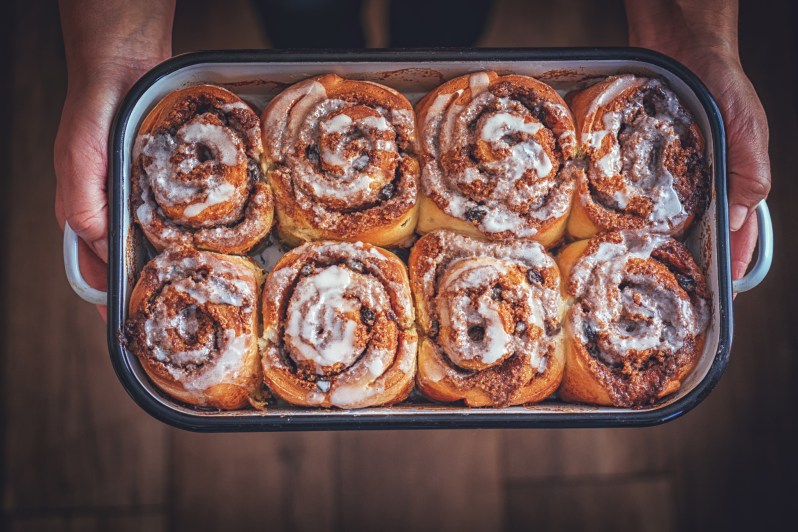
Fruitcake French Toast
Texturally, fruitcake sometimes tends to veer in a dry direction … and since slightly stale bread makes the best French-toast base, you’re already one step ahead by swapping in fruitcake for your usual past-its-prime challah. Baker and blogger Stacie Zollars of SugarFace Bakes likes to soak her fruitcake chunks in a blend of milk, eggs, cinnamon, brown sugar, and coffee liqueur before layering it in a baking dish with pecans and popping it in the oven.
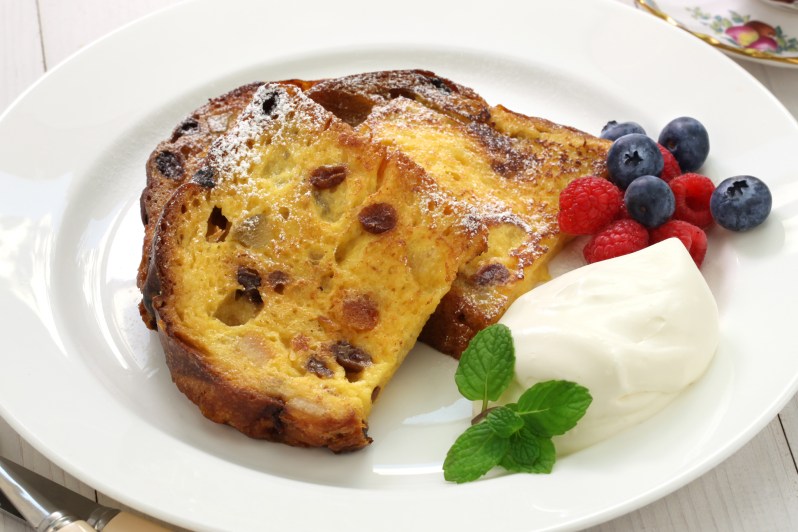
Fruitcake Croutons
Croutons count among the most versatile bread products out there; because they only require a stale loaf and plenty of seasonings, you can easily create everything from garlic bread croutons to cornbread croutons … and, yes, even fruitcake croutons. “I love making croutons out of leftover fruit cake — if you cube them up small, toss in extra virgin olive oil and sprinkle with sea salt and cayenne pepper and pop in the oven until they are golden brown. The salt and heat from cayenne turn them into the perfect bite. I love taking a blend of bitter greens, goat cheese, and a little olive oil and vinegar. It is the perfect winter salad,” says vice president of marketing + operations Tara Treffry of LeBlanc and Smith Hospitality Group in New Orleans.
Fruitcake Bread Pudding
Using fruitcake to make a sweet bread pudding is a tried-and-true recycling strategy for this controversial holiday baked good, and it’s one that owner/baker (and James Beard Award finalist) Nathaniel Reid of Nathaniel Reid Bakery in St. Louis especially cherishes. When whipping up a fruitcake bread pudding, Reid makes a warm salted caramel sauce to drizzle over the top, which highlights both the sweetness of the dried fruits and the complex flavor of the rum he uses in his fruitcake batter recipe.
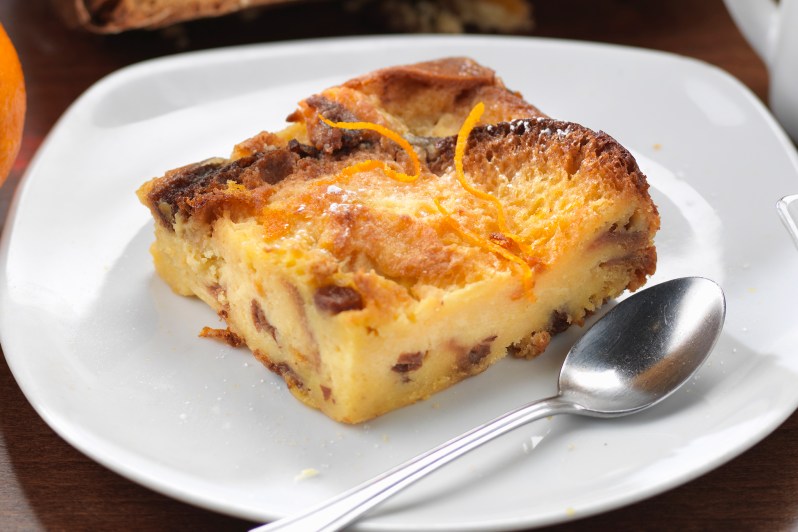
Fruitcake Trifle
A classic English dessert traditionally made with sherry-soaked ladyfingers, fruit, and custard, the trifle contains flavors (namely berries, cream, and booze) that collaborate beautifully with the profile already present in fruitcake. That’s why executive chef Ashlee Aubin of Fisk & Co. in Chicago likes to replace the sponge fingers usually used in trifle with fruitcake: “Leftover fruitcake is a great ingredient in a holiday trifle. Just layer whipped cream, cinnamon rice pudding, and cubes of toasted fruitcake in a glass bowl. Drizzle the cake pieces with brandy or amaretto for extra kick.”
Fruitcake Soufflé
Although soufflés are famously temperamental (and, therefore, often intimidating to amateur cooks), they can also prove an excellent canvas for flavor experimentation, as long as you have the patience and wherewithal required for their execution. Chef/owner Donatella Arpaia of Prova Pizzabar in New York City considers soufflés the perfect way to turn dull fruitcake into something special: “I love to grind the leftover fruitcake into a fine powder, and then I’ll use that to make a classic soufflé. Personally, I think it is so much better than eating just a slice of fruitcake!”
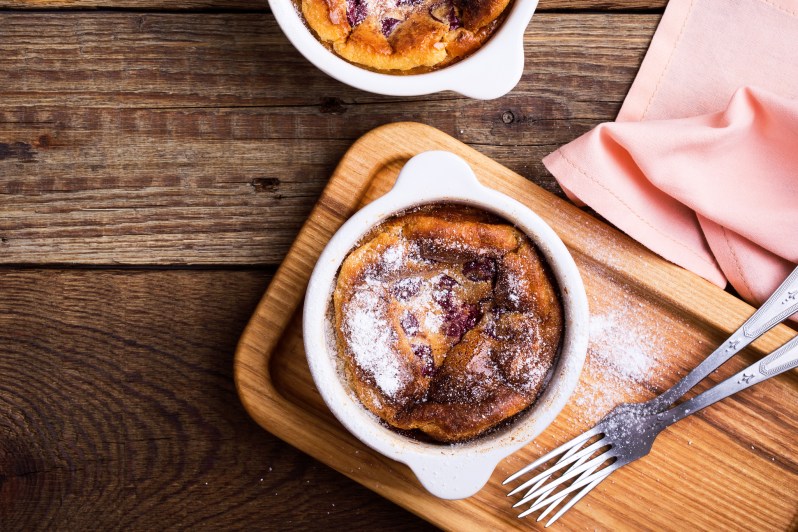
Rum and Fruitcake Ice Cream
For a clever spin on rum-raisin ice cream, try this twist from chef Ryan McQuillan of Plough and The Exchange in Lancaster, PA: “I like to turn leftover fruitcake into a rum-based ice cream with fruitcake chunks in it. I then pair it with dehydrated fruitcake and some butter rum syrup and make myself a luscious Christmas sundae.”
Fruitcake “Bourbon Balls”
Planning any post-Xmas house parties? Turning your leftover fruitcake into handheld “bourbon balls” gives you an easy and crowd-pleasing dessert. Chef Jessica Shillato of Spotted Salamander in Columbia, SC makes hers by grinding fruitcake in a food processor, adding bourbon and raw sugar, rolling the mixture into balls, and coating them with powdered sugar.
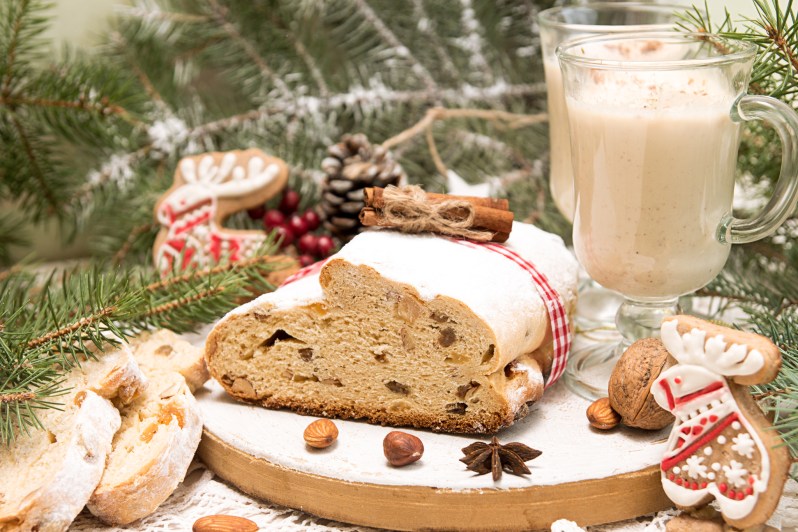
Fruitcake Eggnog
Eggnog already qualifies as an inherently festive beverage, but infusing it with fruitcake both enhances its flavor and brings in an extra level of holiday cheer. London-based chef, cooking show host, and cookbook author Judy Joo tells us that “ I love to use fruitcake to infuse my rum and use it to make a decadent eggnog. I infuse the milk and cream too and make fruitcake bread crumbs to sprinkle on top with nutmeg or rim the glass. You can also serve with a toasted ‘soldier’ of fruitcake on the side for dipping!”
Fruitcake Old Fashioneds
Fruitcake makes a harmonious addition to cocktails that already incorporate fruit flavors, like the Old Fashioned. Chef Sara Bradley of Freight House in Paducah, KY recommends an infusion process that involves soaking 1 pound of fruitcake in 450 mL of whiskey (she prefers Rittenhouse Rye) for 24 hours before straining through a coffee filter. Then, she mixes her Old Fashioned using the fruitcake-washed rye, nut liqueur (she prefers Pisa Liqueur), and a few dashes of bitters.



